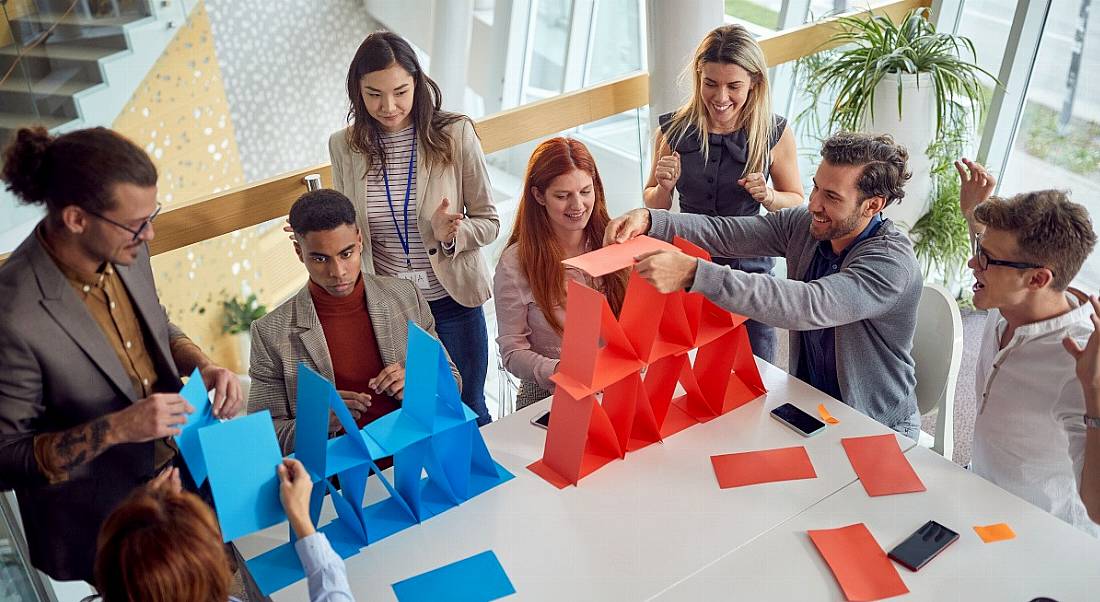As more and more companies worldwide look to technology to bridge the metaphorical and physical gaps within the workforce, could gamified learning forge a connection?
For James Micklethwait, vice-president of global learning platform Kahoot! at work, the pursuit of lifelong learning will prove increasingly crucial as technological innovation continues to drive change across industries.
He finds that more and more businesses are recognising that the fundamentals of learning typically taught in the early years, where there is a strong link between fun and education, can translate from school to the workplace.
“Learning will never be easy and is certainly not best experienced passively, hence why active engagement is key to any learning initiative,” he explains.
“While it may be true that AI will fundamentally change how learning is experienced, in my view there will always be a need for engaging learning experiences which provide motivation for learners of all ages.”
A different energy
With particular reference to the UK, Micklethwait noted how the cost of living crisis has damaged the lives of citizens, with a “negative knock-on effect on job market confidence and potentially inciting feelings of anger and stress within workers, leading to disengagement”.
According to Micklethwait, despite the UK largely holding remote and hybrid working arrangements in high regard, employers believe the post-pandemic flexible work culture is a hindrance to employee engagement and productivity.
“Businesses now look to remedy this with return-to-office mandates, yet they negate the bigger picture. The pandemic has fundamentally changed the way we work and learn, and organisations must do more to facilitate remote working, and in turn generate engagement,” he says.
For Micklethwait, gamification is an innovative, fun and useful way to re-engage employees with each other and their work. “Gamification in the workplace attempts to cut through the monotony of manual tasks, combining interactive game elements such as fun, play, rules, uncertainty, competition and rewards, and integrating them into a non-game context.”
From a psychology point of view, he noted gamification taps into fundamental components of our innate motivational systems, stimulating engagement and enjoyment.
“Numerous Fortune 500 companies such as IBM, Microsoft and Cisco for example have adopted digital badge and leaderboard pilot programmes that facilitate a genuinely absorbing interactive reward system, that not only fosters a healthy competitive momentum but can also be personalised for self-development,” says Micklethwait.
Processes that when incorrectly approached are often mundane and time-consuming, for example onboarding or training, can be transformed into team-building exercises, “assembling new employees to collaborate in their education on workplace ethics and compliance, through the earning of points, answering of online quizzes and level-based progression”.
Building blocks, not barriers
According to Micklethwait, businesses face a significant challenge in attempting to consistently engage a vast network of employees, many of whom are dispersed throughout the world. He says that gamification can help negate feelings of isolation and reinforce positive behaviours.
“Competing against colleagues facilitates a sense of togetherness, while tackling gamified issues together can help to reconnect a fractured workplace by uniting employees in a shared task or goal. By combining fun, interactive elements into meetings, presentations, training and tasks, gamification can revert our attitudes to everyday work,” he explains.
He notes that there are barriers to the successful integration of gamified workplace models, for example, outdated technical infrastructure and the unwillingness to change.
“They may be wary of, or reticent to, the benefits of gamification and unwilling to overhaul current practices for more modern technologies. This is particularly relevant given the surge in budget cuts. It’s also possible that a snobbery towards workplace ‘fun’ exists, with businesses potentially stigmatising gamification as trivial to productivity and an unnecessary distraction and expense,” he says.
Technical literacy can also prevent progress particularly within an ageing workforce where it might be commonly felt that a move towards gamification would only have an adverse effect on morale and productivity.
It is worth noting, says Micklethwait, that studies have shown that people in older age groups can benefit greatly from gamification.
He gives the example of a University of California San Francisco study where researchers found that by using a specially-designed game, they were able to improve cognitive control of older participants.
“While it is true that associations with the specific term ‘gamification’ maintain some negative connotations with the older workers, a simple renaming of these game-based methods yields just as positive and beneficial impressions as those by younger employees.”
Ultimately, the pandemic has fundamentally changed how we live and work and Micklethwait says it is the responsibility of organisations to reconsider how they facilitate remote working, compel engagement and motivate employees.
“Before we see gamification rolled out in large-scale organisations, we first need to remove the stigma around workplace technology.”
Find out how emerging tech trends are transforming tomorrow with our new podcast, Future Human: The Series. Listen now on Spotify, on Apple or wherever you get your podcasts.




